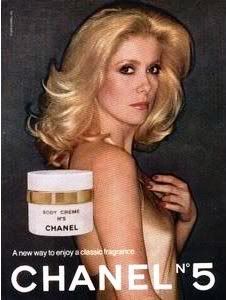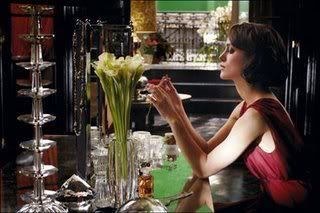
French for the Greek island of Cyprus, an island with a tormented history through the ages, chypre came to symbolise a family of scents that took inspiration by the natural aromas encountered in the foliage of its trees and the blood-soaked soil of its land.
The Romans used to produce a perfume in Cyprus that contained storax , labdanum and calamus. It smelled heavy and almost oriental in feeling and it continued to be manufactured throughout the Middle ages in Italy and then in France , with oakmoss as its base.
The discovery of a perfume factory on the island of Cyprus dating from 2000 BC by Italian archaeologists in recent years enriched our knowledge on the subject considerably and brought us into the origins of the fragrant family.
An Italian archaeology team has dug the site of a Bronze Age perfume factory in Pyrgos-Mavrorahi 55 miles south-east of Nicosia (the island's capital), in which some of the ancient artefacts were still intact after the site's historical destruction in an earthquake. The site included a copper smelting works, a winery and an olive press that provided the base ingredient for the fragrances.
The perfume trade originating from Egypt was reputedly massive at the time the Cyprus factory was in production and archeologists deem it highly likely that the two civilizations had firm trading links, judging from their overall cultural exchange. The Cypriots had probably learned a lot from their interaction with the Egyptians.
It is well documented that the civilization of Egypt placed great importance to essences and scents, deeming them worthy of taking to the afterlife, as they have been found in predynastic graves. A royal tomb at Abydos(placed at about 3000 BC) included jars containing coniferous resin mixed with plant oil and animal fats; a precursor to modern solid perfumes.
Not to mention that the first strike in recorded history happened at the time of Ramses III (1165 BC), when workers refused to continue work when their supply of fragrant ointment was interrupted while they worked at the Valley of the Kings! Trully, love for perfume.
Coincidentally, enormous jars capable of holding 500 litres of olive oil were also uncovered in the cypriot dig, reconfirming theories of the trading links between Cyprus, Greece and Egypt.
According to "How to make perfume":
People in those ancient times held perfumed oils and ointments in great esteem, not just for their daily bathing routine or to impress each other. More importantly, these people in ancient lands would not have conducted their burials and ceremonies without the presence of perfumed resins, fragranced ointments and aromatic oils. Tracing back the origins of how to make perfume to the second and third centuries BC has been helped tremendously by the remarkable discovery of the industrial perfumery in Cyprus.
While some modern ingredients are much more advanced, Chypre perfumes are known for their bergamot and mossy properties, consistent with the findings at the Cyprus perfumery. Also present in the bottle fragments were traces of myrtle, laurel and cinnamon.
Indeed among the aromas found in the cypriot remains were those of cinnamon, laurel, myrtle, anise and citrus bergamot. These components are those detailed by the Roman writer Pliny (AD23-79), who described the composition of various fragrances in his encyclopaedic Historia Naturalis and confirm that the ancients were composing fragrances of great sophistication.
As Ayala Moriel, herself a perfumer, so savantly mentions in her blog:
We know about chypre scents being made on the island as early as the 12th century. They were made primarily of labdanum resin and mixed with other local aromatics from herbs and flowers. Oyselets de Chypre (Chypre Birds) were formed from a paste of labdanum, styrax and calamus, mixed with tragacanth*. The perfumes in those old days were burned as incense and the birds decorated and scented rooms. It wasn’t until the 14th century that oakmoss was added to these pastilles. A book from 1777 provides perfume formulas for two chypre compositions that included oakmoss as well as civet, ambergris, musk and various resins and plant aromatics, including rose and orange blossom.
(*Tragacanth? Learn what it is here).
The main ingredients of a Chypre in modern times are generally considered to be oakmoss , patchouli , labdanum, angelica or clary sage , with the addition of floral middle notes such as rose-jasmin and a bright, fresh, lightly sweet top note of bergamot or even lemon.
The natural ingredients used had remained unchanged for thousands of years until the introduction of synthetic molecules after the Industrial Revolution of the 19th century and into the beginning of the 20th.

In fact, while perfumes remain elitist and limited in distribution right up to the First World War, Coty's "Chypre" breaks with tradition in 1917 by proposing the first perfume for the masses which will encounter an exceptional public reception(from Musee de Grasse)
It is worthy of mention in passing that Coty believed in the democratization of scent and used witty marketing to his advantage:
"Give a woman the best product you can prepare, present it in a perfect flask of a simple elegance but irreproachable taste , and sell it at a reasonable price, and you' will witness the birth of a big business like the world has never seen".
[Coty had a fascinating biography as you can see here, but I digress.]
Back on point, the basic chord in a classic chypre however is always bergamot-oakmoss-labdanum. Whatever other notes the sites/guides mention , those must be in there for it to qualify as a "classic chypre", a true descendant of Coty's Chypre from 1917. Especially do NOT confuse chypres with ambery perfumes, parfums ambrees in French, which are really "orientals" in perfume taxonomy. Modern chypres are a different animal, smelling quite different than classic chypres, so the issue is tackled on the above linked article.
The reformulation of classics brings us to the controversy that has erupted about the restrictions in the use of natural oakmoss by the indystry; but more about that in another installment of this Perfume Shrine series...
Read on the rest of the Chypre Series on Perfume Shrine following the links:
Part 7: chypre fragrances time forgot
Top pic of Troodos forest park in Cyprus courtesy of european-foresters.org and pic of vintage Coty Chypre from artsuppliesonline via Ayala Moriel
Top pic of Troodos forest park in Cyprus courtesy of european-foresters.org and pic of vintage Coty Chypre from artsuppliesonline via Ayala Moriel
.jpg)









.jpg)
